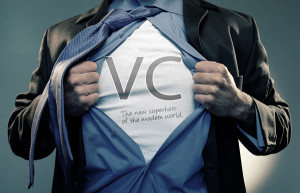 Venture Capitalist, Sergio Monsalve, predicts 5 trends that will create a large stir in 2015. As companies continue their fast-paced scaling and innovation, below 5 industry trends that Sergio expects to see develop further in 2015.
Venture Capitalist, Sergio Monsalve, predicts 5 trends that will create a large stir in 2015. As companies continue their fast-paced scaling and innovation, below 5 industry trends that Sergio expects to see develop further in 2015.
1) Watch out for software! – 2014 saw a lot of mergers and acquisitions for hardware, but Sergio expects that to shift more into software based ventures. He also predicts that the hardware Internet of things will become more of a commodity. We can already see this in the smart watch industry as FitBit and Apple are becoming more focused on commoditized offerings.
2) Online education will make major strides – Online education is expected to reach $107 billion by the end of 2015, which represents an increase of 200% in three years. Stanford’s Graduate School of Business is leading the way by announcing their online school for company executives.
3) A new generation of marketplace will emerge – Emerging marketplaces like Udemy and Minted have the potential to take over last generation’s marketplaces of eBay and Craigslist. Major online marketplaces will continue to make a major dent in the economy and grow at a faster rate, with the potential to surpass Apple and Alibaba.
4) The NASDAQ will flatline – Multiple people are talking about a bubble that is forming, but Sergio believes that the NASDAQ will stay relatively flat and might even decline a bit. Sergio does believe that there will be quite a bit of volatility in 2015. The IPO standards will be greater to let a little air out of the potential asset bubble.
5) Indian Startups – 2015 will be a strong year for the digital economy in India. India recently had an election that people are feeling confident about. This paired with their growing technology sector will certainly take advantage of the global digital economy. Venture Capital has increased tremendously in India as venture capitalists are looking globally to find the next big digital market.
 A recent article on Investor Place talks about how venture capital revolutionized business in the United States. The article goes on to discuss the history of venture capital. The beginnings of the practice are said to have started back in the 1970s where tech gurus like Tom Perkins and Don Valentine saw major advantages to providing capital for startup companies.
A recent article on Investor Place talks about how venture capital revolutionized business in the United States. The article goes on to discuss the history of venture capital. The beginnings of the practice are said to have started back in the 1970s where tech gurus like Tom Perkins and Don Valentine saw major advantages to providing capital for startup companies.